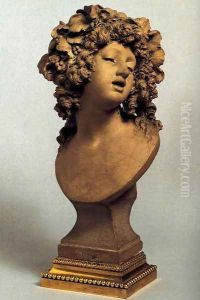Joseph Charles Marin Paintings
Joseph Charles Marin was a French sculptor and medalist born in 1759 in Bagnères-de-Bigorre, a commune in the Hautes-Pyrénées department in southwestern France. He was active during a period that spanned the late 18th century and the early 19th century, a time marked by political turmoil and significant developments in the arts throughout Europe. Although not as renowned as some of his contemporaries, Marin made contributions to the art world through his work in sculpture and medal-making.
Marin's early life and training are not extensively documented, but it is known that he was active during the reign of King Louis XVI and that he continued to work through the French Revolution, the Napoleonic era, and into the Restoration period. He was a student of the prominent French sculptor Jean-Antoine Houdon, who was famous for his portrait busts and whose influence can be seen in Marin's own approach to sculpture.
During his career, Marin produced a variety of works, including portrait busts, statues, and relief sculptures. He also became noted for his medals, which were a popular form of commemorative art during the era. His style was reflective of the neoclassical aesthetic that dominated the period, characterized by a return to classical ideals of beauty, proportion, and simplicity.
Despite the fact that Marin's work was appreciated in his time, he did not achieve the same level of lasting fame as some of his peers. His contributions are recognized by specialists in French sculpture and medallic art of the 18th and 19th centuries, but the wider public may not be as familiar with his oeuvre.
Joseph Charles Marin passed away in 1834. His works continue to be of interest to art historians and collectors who value the neoclassical style and the historical context in which Marin created his art. His pieces are part of museum collections and are studied for their craftsmanship and as documents of the artistic trends and cultural atmosphere of his time.

